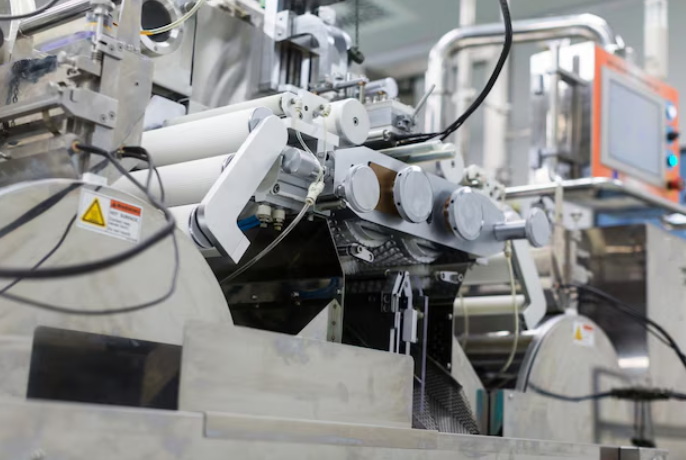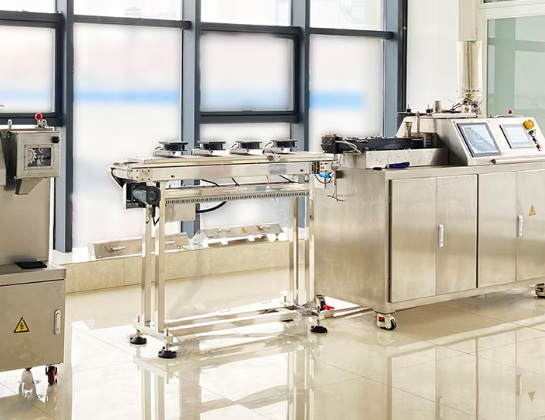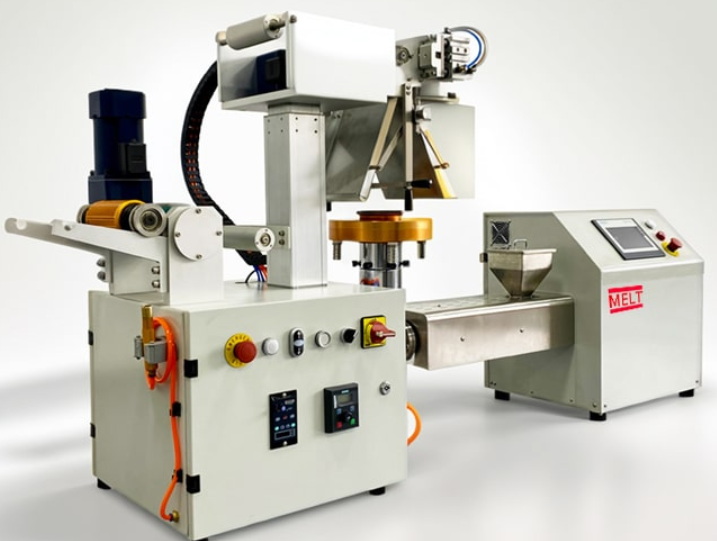Content Menu
● Introduction to Lab Extrusion Machinery
>> Key Components of Lab Extruders
● Types of Lab Extruders
>> Single-Screw Lab Extruders
>> Twin-Screw Lab Extruders
>> Micro Lab Twin Screw Extruders
● Applications of Lab Extrusion Machinery
● Accuracy and Precision in Lab Extrusion Machinery
● Benefits of Using Lab Extrusion Machinery
● Choosing the Right Lab Extruder
● Additional Considerations for Small-Scale Production
>> Energy Efficiency
>> Maintenance and Durability
>> Integration with Other Equipment
>> Training and Support
● Future Developments in Lab Extrusion Machinery
>> Sustainability Initiatives
● Case Studies: Successful Applications of Lab Extrusion Machinery
● Conclusion
● FAQ
>> 1. What is the primary advantage of using lab extrusion machinery in small-scale production?
>> 2. How do twin-screw lab extruders differ from single-screw extruders?
>> 3. What materials can lab extruders handle?
>> 4. How does lab extrusion machinery contribute to cost-effective prototyping?
>> 5. What role does scalability play in choosing a lab extruder?
Lab extrusion machinery plays a crucial role in small-scale production, particularly in research and development environments. These machines are designed to simulate large-scale production conditions on a smaller scale, allowing for precise control over various parameters such as temperature, pressure, and speed. This article will delve into the accuracy and capabilities of lab extrusion machinery, exploring its applications, types, and benefits in small-scale production.

Introduction to Lab Extrusion Machinery
Lab extrusion machinery is a versatile tool used in various industries, including food, pharmaceuticals, and plastics. It operates by applying heat and pressure to raw materials, transforming them into semi-finished or finished products. The process involves feeding materials into a hopper, which are then conveyed through a heated barrel by rotating screws. The material is melted and mixed before being shaped by a die at the end of the extruder.
Key Components of Lab Extruders
1. Feed Hopper: This is where raw materials are loaded into the extruder. Proper construction ensures even feeding and prevents blockages.
2. Screw(s): These convey, compress, and melt the material. Single-screw extruders are simpler, while twin-screw extruders offer better mixing capabilities.
3. Barrel: Contains the screw(s) and provides the environment for melting and mixing. Temperature control is crucial here.
4. Die: Shapes the extruded material into the desired form.
5. Control System: Modern extruders include advanced control systems for precise parameter manipulation.
Types of Lab Extruders
Single-Screw Lab Extruders
These are ideal for simpler operations, offering good control over temperature and shear processes. They are suitable for basic product development and simpler polymer formulations.
Twin-Screw Lab Extruders
Twin-screw extruders provide enhanced mixing capabilities, making them suitable for more complex processes like compounding high-content fillers and producing biodegradable composites.
Micro Lab Twin Screw Extruders
These are designed for small batch processing and prototyping, allowing for quick formulation changes without requiring large amounts of material.
Applications of Lab Extrusion Machinery
Lab extruders are used in various fields, including:
- Polymer Development: For testing new polymer formulations and compounding materials.
- Food Industry: For developing new food products, such as snacks and cereals.
- Pharmaceuticals: For creating pharmaceutical pellets and tablets.
- Technical Experiments: For conducting material science experiments.
Accuracy and Precision in Lab Extrusion Machinery
The accuracy of lab extrusion machinery is crucial for achieving consistent and reliable results. Modern lab extruders are equipped with advanced control systems that allow for precise control over temperature, pressure, and speed. These systems ensure that the extrusion process can be replicated consistently, which is essential for research and development purposes.

Benefits of Using Lab Extrusion Machinery
1. Enhanced Research and Development: Lab extruders allow for precise control and flexibility, enabling researchers to test various formulations and conditions.
2. Cost-Effective Prototyping: They require smaller material quantities, reducing waste and costs associated with large-scale production.
3. Reduced Time to Market: By simulating large-scale conditions, lab extruders help in quickly optimizing formulations before scaling up production.
Choosing the Right Lab Extruder
When selecting a lab extruder, several factors should be considered:
- Batch Size Compatibility: Ensure the extruder can handle the intended batch size efficiently.
- Material Versatility: The extruder should be able to process a variety of materials.
- Operational Efficiency: Consider energy consumption and processing time.
- Scalability: Ensure the extruder can simulate full-scale production conditions for easy scale-up.
Additional Considerations for Small-Scale Production
Energy Efficiency
Lab extruders are designed to be energy-efficient, which is important for reducing operational costs in small-scale production. Modern models often include features like variable speed drives and optimized heating systems to minimize energy consumption.
Maintenance and Durability
Regular maintenance is crucial to ensure the longevity and performance of lab extruders. Proper cleaning and lubrication of moving parts can significantly extend the lifespan of the machinery.
Integration with Other Equipment
In many cases, lab extruders are used in conjunction with other equipment, such as mixers or granulators, to create a comprehensive production line. Ensuring compatibility and seamless integration with these systems is vital for efficient workflow.
Training and Support
Manufacturers often provide training and technical support for lab extruders, which is essential for maximizing their potential. Proper training helps operators understand how to optimize process parameters and troubleshoot common issues.
Future Developments in Lab Extrusion Machinery
The future of lab extrusion machinery is likely to involve advancements in automation and digitalization. Integration with AI and IoT technologies could enhance predictive maintenance, optimize process conditions, and improve overall efficiency.
Sustainability Initiatives
There is also a growing focus on sustainability in lab extrusion. This includes developing machinery that can process biodegradable materials and reducing waste through more efficient production processes.
Case Studies: Successful Applications of Lab Extrusion Machinery
1. Polymer Compounding: A company used a twin-screw lab extruder to develop a new polymer compound with enhanced thermal stability. The extruder's precise control allowed for rapid optimization of the formulation.
2. Food Product Development: A food manufacturer utilized a single-screw lab extruder to create a novel snack product. The extruder's flexibility enabled quick adjustments to the recipe, resulting in a product with improved texture and flavor.
3. Pharmaceutical Formulation: Researchers employed a micro lab twin screw extruder to formulate a new pharmaceutical pellet. The extruder's small batch capability allowed for efficient testing of different formulations without excessive material waste.
Conclusion
Lab extrusion machinery is a vital tool for small-scale production, offering precision, versatility, and cost-effectiveness. Its ability to simulate large-scale conditions makes it ideal for research and development, allowing for quick formulation optimization and reduced time to market. By understanding the types and applications of lab extruders, industries can leverage these machines to enhance their product development processes.

FAQ
1. What is the primary advantage of using lab extrusion machinery in small-scale production?
Lab extrusion machinery provides precise control over the extrusion process, allowing for accurate and reproducible results. This is crucial in research and development scenarios where minor alterations can significantly impact the end product.
2. How do twin-screw lab extruders differ from single-screw extruders?
Twin-screw extruders offer enhanced mixing capabilities due to their intermeshing screws, making them suitable for more complex processes like compounding high-content fillers and producing biodegradable composites. Single-screw extruders are ideal for simpler operations requiring less mixing.
3. What materials can lab extruders handle?
Lab extruders can handle a wide range of materials, including polymers, food ingredients, and pharmaceutical compounds. They are designed to process both solid and liquid materials, providing flexibility in product development.
4. How does lab extrusion machinery contribute to cost-effective prototyping?
Lab extruders require smaller quantities of materials for testing, reducing waste and costs associated with large-scale production. This makes them a cost-effective solution for material and process development.
5. What role does scalability play in choosing a lab extruder?
Scalability is crucial as it allows the extruder to simulate full-scale production conditions. This ensures a smooth transition from small batch extrusion to larger production volumes, making it easier to scale up production once formulations are optimized.






















